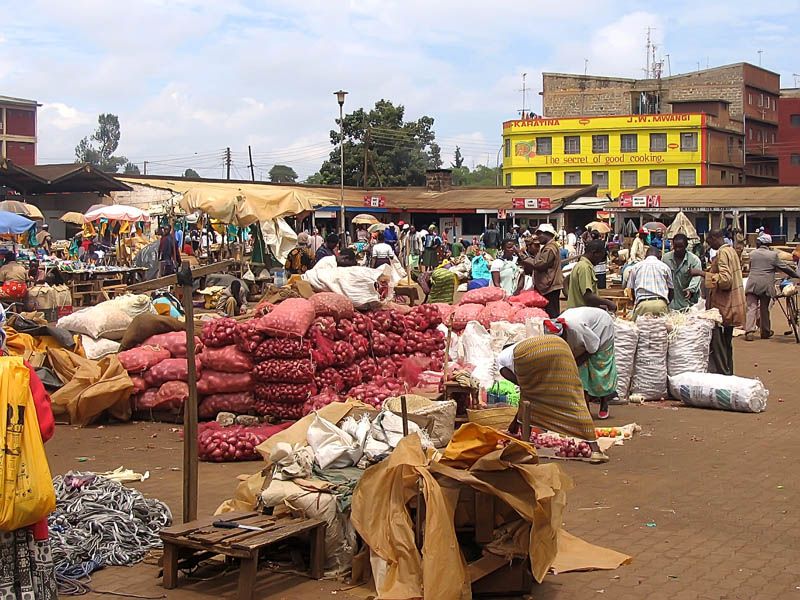The big question is “how do economic development corridors go hand in hand with equitable benefits in Africa?”
All nations worldwide pledged in 2014 to complete the seventeen Sustainable Development Goals (SDGs) by 2030.
One of them, however, distinguishes itself from the rest due to its interconnectedness.
Building robust infrastructure and promoting inclusion and sustainable industrialization is part of it. Goal 9.
In contrast, the term “infrastructure” used here refers to the resources that make it possible for people to meet their needs for:
1. Power utilities such as coal, wind Solar, etc.
2. Water sources: such as dams,
3. Transport facilities such as roads and railways
4. Telecommunication such as internet cables among others.
Simultaneously, Goals 13,14, and 15 require us to conserve life, land, and water. It also requires us to instil climate decisive actions.
Therefore, to satisfy all of these objectives, significant political and socioeconomic trade-offs had to be made.
Perhaps, one technique must be effective to establish the infrastructure needed for economic development. This was the major driving force that fueled the name economic development corridors.
The brainchild of it being the Asian Development Bank which coined the name two decades ago, at the 8th ministerial conference on Greater Mekong Sub-Regional Cooperation, where it was used for the very first time.
Since then, EDC has remained to be an integrated network of infrastructure within a geographical area designed to stimulate economic development.
On the continent, Numerous growth corridors are being proposed. A clear illustration of using this concept on a global basis is SAGCOT located in Tanzania. This corridor is divided into six clusters where agricultural investment is planned to be concentrated. The SAGCOT Centre Ltd, which serves as a middleman between investors and agricultural firms, implements the SAGGOT corridor plan. Additionally, it encourages growth that is both inclusive and sustainable within active clusters and corridors.
As of 2019, the Ihemi, Mbarali, and Kilombero clusters have all been created and are actively engaged in fieldwork. The Rufiji river basin, which extends up to Tanzania’s Southern Highlands and empties into the Indian Ocean, contains all three clusters.
Another choice is the Lappset Corridor. It unites Kenya, Ethiopia, and South Sudan in the largest and most ambitious infrastructure projects in Eastern Africa. Seven major infrastructure projects make up this megaproject, starting with a new 32-berth port at Lamu (Kenya), interregional highways from Lamu to Isiolo, Isiolo to Juba (South Sudan), Isiolo to Addis Ababa (Ethiopia), and Lamu to Garsen (Kenya), crude oil pipelines from Lamu to Isiolo, Isiolo to Juba, product oil pipelines from Lamu to Isiolo, Isiolo to Lamu, Isiolo, and Lake Turkana each have one international airport. There are three resort towns: Lamu, Isiolo, and Lake Turkana.
Other economic development corridors include:
· Central Asia Regional Economic Cooperation Program
· China-Central Asia–West Asia Economic Corridor
· Khyber Pass Economic Corridor
· Trans-Himalayan Multi-dimensional Connectivity Network
· Sarawak Corridor of Renewable Energy
· Nanning–Singapore Economic Corridor
· East-West Economic Corridor
· Mumbai-Bangalore economic corridor
· Eastern Economic Corridor
· Eastern Economic Corridor (India)
· Bangladesh–China–India–Myanmar Forum for Regional Cooperation
o East-West Industrial Corridor Highway, Arunachal Pradesh
One route that is nearly finished and reaches East Africa is worth mentioning. This road connects Kenya and Ethiopia—the Nairobi-Addis-Abeba road corridor.
The 895-kilometre route connects Ageremariam, Yabelo, and Mega in Ethiopia to Merille and Turbi towns in Kenya via Marsabit.
Trade between Kenya and Ethiopia has expanded while costs and congestion have decreased since the Kenyan portion of the Nairobi-Addis Ababa road corridor was finished in 2016.
Numerous advantages have been provided by the nearly finished road corridor, including more job prospects and quicker travel times. By enhancing the flow of products across borders, the road has also had a favourable impact on border checks and customs.
On the Ethiopian side, cross-border trade in goods has also proved advantageous.
By the time the entire project is finished, the AfDB projects that trade between Kenya and Ethiopia will have grown five times, from $35 to $175 million.
The bank anticipates that the new route would result in an additional 900,000 tons of cargo being moved to and from Mombasa.
The success of this project has been facilitated by the virtue of available resources and Kenya’s commitment to remain top of East Africa’s powerhouse.
Additionally, the Abidjan-Lagos Corridor has already been finished in West Africa. It connects the capital cities of five different countries in West Africa’s main east-west transportation corridor. Specifically, Nigeria, Ghana, Togo, Benin, and Côte d’Ivoire. It is acknowledged that travel through the corridor is essential for the socio-economic growth of the area.
Meanwhile, as It is true that planning for corridors should put into account the environmental threats, it is acceptable also to listen to criticism such as this article “Massive ‘Development Corridors’ In Africa Could Spell Environmental Disaster” published on BeforeitsNews in November 2015.
However, the article went to the extreme by saying “In terms of development pressures, these corridors would be the biggest thing to hit Africa — ever,” William Laurence, Center for Tropical Environmental and Sustainability Science, Australia. Although strong environmental warnings are important, the best remedy to address those worries is to involve environmental groups in the process of planning.
Needless to say, this suggestion has already been considered by the AU, RECs, and other African Bodies and environmental groups are now presented.
International Support for EDC Approach in Africa is Needed.
As stated in the latter, economic corridors are supposed to draw investment and stimulate economic activity inside a contiguous region. This is the foundation of efficient transportation infrastructure, according to a report by the Brookings Institute in Washington, DC. It is worthy to note that the article provided very nice examples to demonstrate the components.
Sadly, no African case could be found in the Brookings report; the majority of examples came from Asia. The Africa Growth Initiative, on the other hand, at Brookings, has strong data. However, the report’s absence of African examples raises concerns about the visibility of African development initiatives.
The report made a connection between the corridors and commerce and industry.
“Aside from the development of infrastructure, long-term advantages to commerce and industry along the corridor include benefits arising from smooth access to the industrial production units. It also includes decreased transportation and communications costs, improved delivery time, and reduction in inventory cost,” the report stated.
Between 2018 and 2020, considerable changes occurred in Nairobi and Mombasa, Kenya, through its regional organization IGAD. Planning discussions and contract agreements with consulting firms were required to create a development master plan. The consultative dialogue—the first forum for civil society—took place after the IGAD examined its Regional Infrastructure Master Plan (IRIMP) Report in Entebbe, Uganda.
This was an excellent chance to ensure that planning took social and environmental concerns into account.
All IGAD state and non-state players are very involved in infrastructure initiatives. This is according to Elsadig Abdalla, a representative from the IGAD Secretariat.
During the event held in Entebbe, Jamie Andrew Simpson, the Executive Director of IPE Global, the consulting partner on IRIMP, also mentioned how over the previous 10 to 15 years, EDC’s approach has become increasingly more integrated with development policies and plans in Africa.


